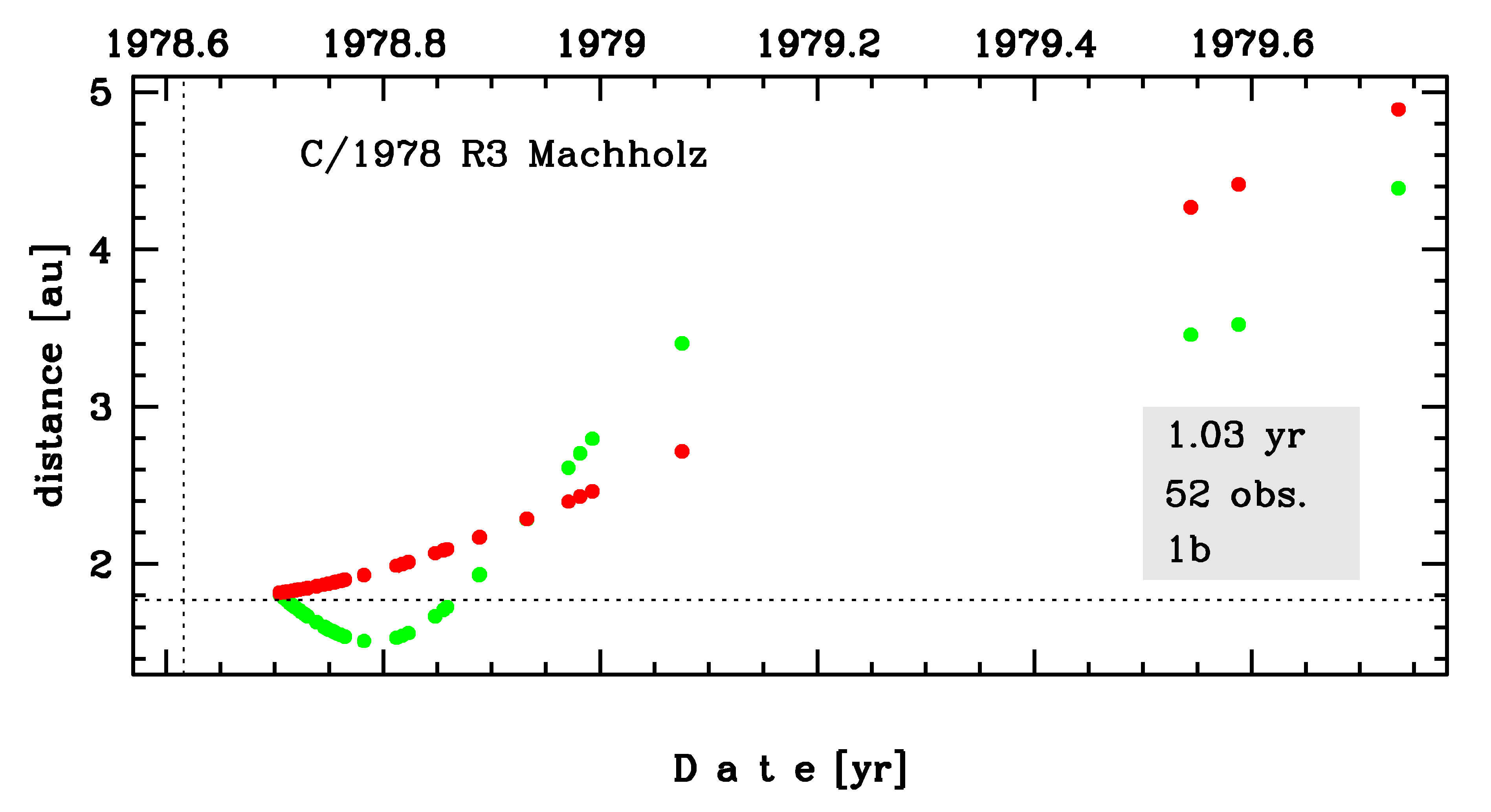C/1978 R3 Machholz
more info
Comet C/1978 R3 was discovered on 12 September 1978 by Donald E. Machholz (Mt Loma Prita, California, USA), that is about a month after its perihelion passage.This comet was last observed on late September 1979.
Comet had its closest approach to the Earth on 15 October 1978 (1.510 au), about a month after discovery.
Solution given here is based on data spanning over 1.03 yr in a range of heliocentric distances from 1.82 au to 4.89 au.
This Oort spike comet suffers small planetary perturbations during its passage through the planetary system; these perturbations lead to a more tight future orbit.See also Królikowska 2020.
Comet had its closest approach to the Earth on 15 October 1978 (1.510 au), about a month after discovery.
Solution given here is based on data spanning over 1.03 yr in a range of heliocentric distances from 1.82 au to 4.89 au.
This Oort spike comet suffers small planetary perturbations during its passage through the planetary system; these perturbations lead to a more tight future orbit.See also Królikowska 2020.
| solution description | ||
|---|---|---|
| number of observations | 52 | |
| data interval | 1978 09 14 – 1979 09 25 | |
| data type | observed only after perihelion (POST) | |
| data arc selection | entire data set (STD) | |
| range of heliocentric distances | 1.82 au – 4.89au | |
| detectability of NG effects in the comet's motion | NG effects not determinable | |
| type of model of motion | GR - gravitational orbit | |
| data weighting | NO | |
| number of residuals | 101 | |
| RMS [arcseconds] | 1.50 | |
| orbit quality class | 1b | |
| orbital elements (heliocentric ecliptic J2000) | ||
|---|---|---|
| Epoch | 1978 07 31 | |
| perihelion date | 1978 08 13.66876338 | ± 0.00248681 |
| perihelion distance [au] | 1.77155999 | ± 0.00001702 |
| eccentricity | 1.00031780 | ± 0.00004839 |
| argument of perihelion [°] | 224.751711 | ± 0.001376 |
| ascending node [°] | 290.677938 | ± 0.000269 |
| inclination [°] | 130.636641 | ± 0.000149 |
| reciprocal semi-major axis [10-6 au-1] | -179.39 | ± 27.31 |
